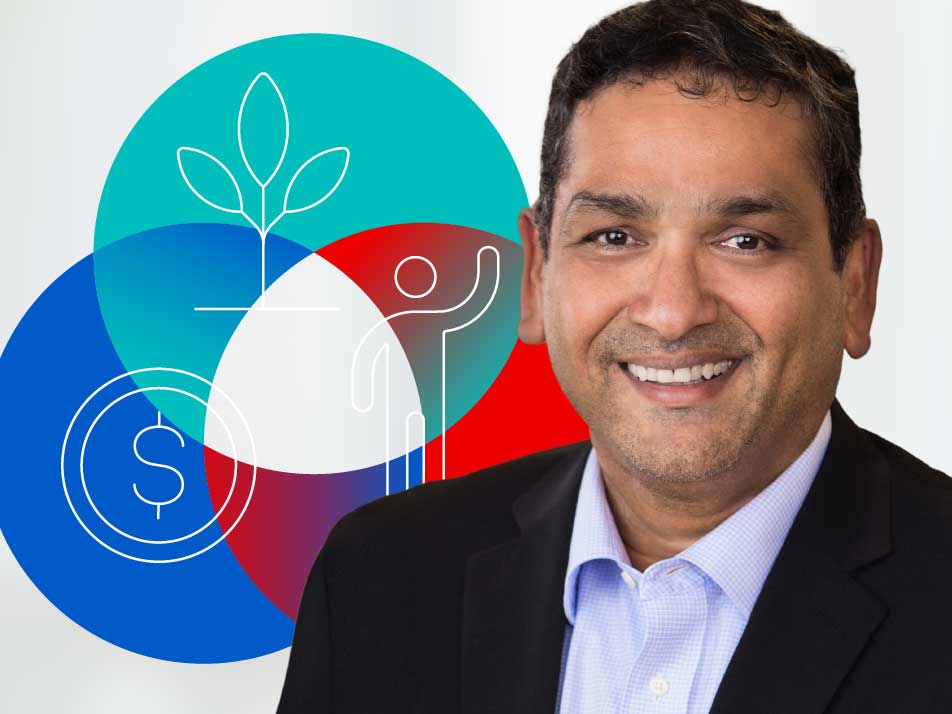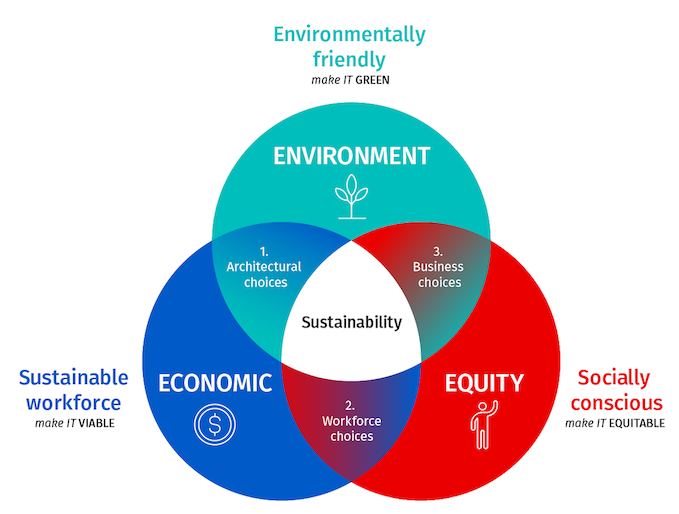How Tech Leaders Can Lead Us Towards a More Sustainable Planet
by Srini Koushik, Chief Technology Officer, Rackspace Technology


Recent Posts
Seven Trends Shaping Private Cloud AI in 2026
January 15th, 2026
From Technical Debt to Digital Agility
January 14th, 2026
Related Posts
AI Insights
Seven Trends Shaping Private Cloud AI in 2026
January 15th, 2026
AI Insights
From Technical Debt to Digital Agility
January 14th, 2026
Cloud Insights
The Cloud Evolution — Why Modernization, Not Migration, is Defining the Next Decade
January 12th, 2026
Cloud Insights, Products
Continuing Success with VMware: How Rackspace Supports Customers and Partners
January 12th, 2026
Cloud Insights, Products
Continuing Success with VMware: How Rackspace Supports Customers and Partners
January 12th, 2026
Our CTO, Srini Koushik shares how we can transform IT to be more environmentally, economically and equitably sustainable for a better future for businesses and the planet.
As organizations make sustainability one of their top priorities, it is important that they strike an effective balance. They need to balance business priorities that drive increased consumption of natural resources against our collective desire to leave a more sustainable planet for generations to come.
A business-driven approach to sustainability should look beyond viewing it as a trade-off to looking at sustainability as a business imperative and competitive advantage. This is done by taking a holistic view of a business across three domains — environmental sustainability, economic sustainability and equitable sustainability.
Technology, and more specifically cloud technologies, have driven tremendous advancements in our lives over the past two decades. However, these benefits have also come with a cost to the environment (increased consumption), society (a growing gap between the haves and have nots) and the exclusion of several key segments of the world’s population from the benefits that many of us enjoy.
CIOs, CTOs and IT leaders can lead the way in driving sustainability within their businesses. They can do this by applying three filters to all their decisions — make IT green, make IT viable and make IT equitable.
Sustainability Filter #1 — Make IT Green
You can make IT green by prioritizing digital solutions and processes over antiquated analog and carbon-heavy solutions. You also need to lead with a cloud-first mindset (private and public cloud) and adopt a continuous improvement and optimization mindset in everything you do. Here are a few examples:
Use Digital Technologies to Transform Operations: One way to reduce the carbon footprint of your business solutions is to increase the use of digital channels and self-service models to minimize more carbon-intensive channels. Moving to a truly paperless model, using intelligent chatbots and implementing virtual desktops are just a few ways you can kick-start the effort. Next, invest in automation that fine-tunes consumption to meet operational demands and eliminate waste.
Take a Cloud-First Approach to Transformation: Engineer and structure applications, processes and data workloads to run optimally on the cloud. Then, implement these well-architected applications using cloud native technologies that can scale up when needed and spin down at other times. For example, building containerized applications using event-driven, serverless architectures can drive optimized demand consumption of infrastructure services provided in highly efficient green data centers from public cloud providers (AWS, Google and Microsoft) and private cloud providers such as Rackspace Technology®.
Sustainability Filter #2 — Make IT Viable
Making IT economically viable requires leaders to adopt a mindset of abundance versus scarcity. For instance, when you decide not to fight the war for scarce talent, you come up with innovative ways to increase your pool of talent. For example, you can use a fit-for-purpose architecture that selects the right and many times simpler application architecture to solve many types of business problems. Doing this will open the door to many new workforce members to be productive contributors to the company and society. A few ways to do this include:
Minimize Complexity: An organization can minimize complexity by selecting a fit-for-purpose architecture based on desired functional and non-functional requirements. It can leverage low-code and Software as a Service (SaaS) technologies to make it easier for more people to enter the IT workforce.
Cast a Wider Talent Net: It’s no longer enough to view the technical talent pool by only seeking seasoned professionals with long-established IT careers or graduates with STEM degrees. Instead, by applying an abundance mindset, we can explore other latent and untapped talent pools, including underprivileged communities (YearUp), veterans and graduates from non-technical fields, and trade schools. For example, Rackspace Technology® is building internship programs that offer a direct line to find, attract and cultivate a new generation of technology professionals.
Invest in Your Workforce: Provide employees with access to internal and external development programs so they can grow professionally in ways that meet the current marketplace needs. Invest in upskilling your existing workforce instead of “buying” skills from the market by offering opportunities for employees to learn on the job through training, mentoring or self-paced courses.
Some of the ways we do this at Rackspace Technology is through our Technical Onboarding Program (TOP) and our Technical Career Track (TCT). These programs offer our Rackers an opportunity to stay, advance and grow within our organization. We also give every employee 52-plus hours to invest how they see fit in developing themselves professionally throughout the year. And we provide an Innovation Day every month so they can take a break from meetings and focus on what they need to do to be successful in their roles.
Sustainability Filter #3 — Make IT Socially Equitable
We must strive to make our solutions socially responsible, fair and equitable. This requires having formal programs that eliminate explicit and implicit bias within organizations, processes and algorithms. In addition, IT companies need to think about scaling inclusivity efforts by expanding access to their products and services while doubling down on creating a truly inclusive company culture.
Eliminate Bias: As computing technology increasingly merges into our personal and professional lives, the need for strong corporate ethics and governance oversight is a must. We need to work hard to eliminate bias in internal algorithms and data that often discriminates against disadvantaged groups—using resources from leaders such as IBM Research (Responsible Technology) to build a responsible, equitable and sustainable IT organization.
Expand Access: Expand access to technology by building solutions with alternative interfaces, like voice-user interfaces (VUIs) and gesture recognition. Optimize your digital content portfolio according to the Web Content Accessibility Guidelines (WCAG), expanding global access to those with disabilities and protecting your organization from non-compliance-based litigation. And leverage the hybrid working model to expand access to technology jobs for people from all over the United States and not just in traditional technology centers on the west coast.
Drive Inclusivity Initiatives: Inclusivity must be built into your business model as a pillar of innovation. Research shows that companies who hire employees with diverse backgrounds and unique perspectives see increased performance and better business results. Therefore, lean into people-centric initiatives that provide education, professional development and support networks for all employees regardless of how they identify.
By using these three sustainability filters to guide your decisions, you, as an IT leader, can reduce the carbon footprint of your business solutions, expand economic opportunities in IT to more people, and make these solutions fair and equitable for everyone.
Building these pillars into the DNA of every organization, including ours, is critical for long-term success. Start by leveraging the foundation of your current organizational structure and augment it to meet the ever-increasing need to be forward-thinking when creating a more sustainable business model.
At Rackspace Technology, we are committed to this holistic view of sustainability, and we lead using cloud computing to drive sustainable IT modernization. Read our complete Environmental, Social, and Governance Report to learn more about how we’re building a more sustainable business infrastructure now and for tomorrow.
Editor’s Note: Learn more about our CTO, Srini Koushik and what he's learned from his 30-year career leading technology in this Cloud Talk podcast.
Tags:





